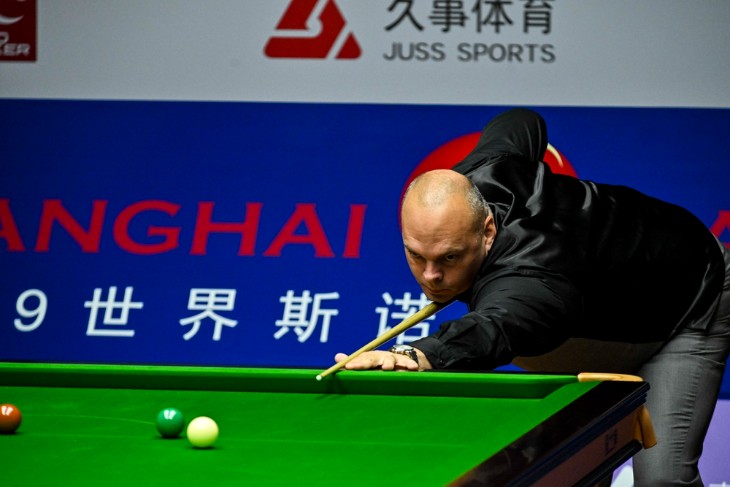The establishment of professional snooker tournaments was a pivotal moment in the sport's history. While snooker had been played informally in clubs and halls for decades, it was the introduction of competitive events that elevated it to a new level of prominence. The first World Snooker Championship was held in 1927 at Camkin's Hall in Birmingham, England, and it marked the dawn of professional snooker as we know it today.
Joe Davis, often referred to as the "Father of Snooker," played a crucial role in promoting the sport and establishing the World Championship as the premier event in the snooker calendar. Davis won the first 15 World Championships consecutively, setting a record that still stands today. His dominance not only brought attention to the sport but also helped build a dedicated fanbase. Davis's charismatic presence and unparalleled skill on the table captured the imagination of the public and the media.
The popularity of professional snooker continued to grow throughout the mid-20th century, and by the 1970s, televised coverage of major tournaments became a common sight. The World Championship, in particular, drew substantial television audiences, further solidifying snooker's relationship with traditional media. As professional snooker tournaments flourished, they provided a platform for talented players to showcase their skills to a global audience, setting the stage for snooker's golden era in the 1980s.
Snooker's Cultural Impact in Britain
As professional snooker tournaments gained traction in the mid-20th century, the sport began to weave its way into the fabric of British culture. Snooker halls became gathering places for enthusiasts, offering a unique social experience. The sport's appeal extended beyond the competitive aspect, fostering a sense of camaraderie among players and fans alike. This cultural phenomenon was reflected in popular media, with snooker making appearances in films, television shows, and literature, further solidifying its status as a quintessentially British pastime.
The 1970s marked a turning point in snooker's cultural impact. The emergence of charismatic players like Alex Higgins and the "People's Champion" Jimmy White captured the public's imagination. Their flamboyant playing styles and dramatic matches added a new dimension to snooker's appeal, making it accessible and relatable to a wider audience. Snooker became a topic of conversation in homes across the nation, and its influence extended to the music industry, with references to the sport appearing in songs by popular artists.
Moreover, the annual World Snooker Championship held at the Crucible Theatre in Sheffield became an iconic sporting event on the British calendar. The Crucible's intimate setting and unique atmosphere created a backdrop for some of the sport's most memorable moments. The tournament's association with this historic venue added to its cultural significance, and it remains an enduring symbol of snooker's place in British society.
Snooker's Television Debut
The transition of snooker from a recreational activity to a televised sport marked a significant milestone in its history. Television brought snooker into the living rooms of millions, allowing fans to witness the drama and tension of the game from the comfort of their homes. In 1969, the BBC televised the World Snooker Championship for the first time, marking the beginning of snooker's enduring relationship with traditional media.
The decision to broadcast the championship was met with a largely positive response, and viewers quickly became engrossed in the matches. The slow and methodical pace of snooker proved to be well-suited for television, with cameras capturing every nuance of the game, from players' expressions to the precision of their shots. The close-up shots of the balls rolling into pockets and the players' contemplative moments added to the visual appeal.
Television coverage also played a pivotal role in introducing audiences to the personalities of snooker players. Viewers developed strong connections with their favourite players, and rivalries, such as the one between Alex Higgins and Steve Davis, became the stuff of legends. The commentary and analysis provided by experts added depth to the viewing experience, making snooker more than just a game; it became a form of entertainment. This newfound visibility on television screens set the stage for snooker's explosive growth in the 1980s, a period often referred to as the "Snooker Boom."

The Snooker Boom in the 1980s
The 1980s were a transformative decade for snooker, as the sport experienced an unprecedented surge in popularity. This period, often referred to as the "Snooker Boom," witnessed a confluence of factors that propelled snooker into the mainstream of British culture and traditional media. At the heart of this boom were charismatic players like Steve Davis, Jimmy White, and Alex Higgins, whose contrasting personalities and playing styles captivated audiences.
Steve Davis, known for his clinical approach to the game, dominated snooker throughout the decade, winning multiple World Championships. His disciplined and methodical playing style earned him the nickname "The Nugget." Davis's success on the table made him a household name, and his consistent excellence drew in a vast television audience. His rivalry with the flamboyant and unpredictable Alex Higgins, dubbed "The Hurricane," provided a captivating narrative that television networks eagerly embraced.
Television played a central role in the Snooker Boom, with extensive coverage of tournaments, including the World Championship, becoming a staple of British broadcasting. The prolonged matches, intricate tactics, and moments of high drama translated well to the television format, keeping viewers engaged for hours. The iconic theme music, "Drag Racer" by the Doug Wood Band, became synonymous with snooker broadcasts and added to the sport's unique appeal. As the Snooker Boom reached its zenith, snooker players became celebrities, and their matches turned into major social events, making snooker an integral part of British culture during the 1980s.
Snooker in the Modern Media Landscape
The Snooker Boom of the 1980s left an indelible mark on the sport, firmly establishing it in the annals of British popular culture. However, as the sport transitioned into the modern media landscape, it faced new challenges and opportunities. The 1990s and 2000s saw the emergence of new sporting disciplines and the expansion of digital media, which reshaped the way sports were consumed.
Snooker adapted to these changes by embracing digital platforms and expanding its global reach. The World Snooker Tour, established in 2010, aimed to bring snooker to a wider international audience. Digital streaming services and online platforms allowed fans from around the world to follow their favourite players and tournaments in real-time. Social media played a pivotal role in connecting fans and players, creating a dynamic online community.
Moreover, the sport continued to thrive on traditional television channels, with broadcasters investing in high-quality coverage and commentary. The World Snooker Championship, held annually at the Crucible Theatre, remained a marquee event, and its traditions were upheld in the modern era. While the Snooker Boom of the 1980s may have waned, snooker's enduring presence in the media landscape demonstrated its ability to adapt and remain relevant in an ever-evolving digital age.
The digital age brought both opportunities and challenges for snooker as it sought to maintain its relevance in a rapidly changing media landscape. One of the primary challenges was the proliferation of other sports and forms of entertainment competing for viewers' attention. The rise of digital platforms, online gaming, and instant access to a wide range of content posed a challenge to traditional sports like snooker. The sport had to adapt to ensure it remained appealing to a younger and digitally engaged audience.
To address this challenge, snooker embraced technological advancements in broadcasting. High-definition broadcasts, multiple camera angles, and interactive graphics enhanced the viewing experience. Innovations like player microphones and the use of statistics provided deeper insights into the game, engaging fans on a new level. Additionally, snooker's presence on social media platforms allowed it to reach younger demographics and create a sense of community among fans.
Another challenge was the need to maintain a balance between tradition and modernity. While embracing digital media, snooker had to preserve the heritage and values that had made it a cherished sport in Britain. The maintenance of iconic venues like the Crucible Theatre and the continuation of longstanding traditions such as the final being played over multiple sessions ensured that snooker remained deeply rooted in its history.
The Global Reach of Snooker Broadcasting
In the 21st century, snooker expanded its horizons beyond its British origins and achieved global recognition through broadcasting. The sport's governing body, the World Professional Billiards and Snooker Association (WPBSA), actively pursued international expansion, seeking to tap into new markets and broaden its fanbase.
One of the key strategies for expanding snooker's global reach was the establishment of international tournaments, such as the China Open and the Masters in Germany. These events attracted top players from around the world and exposed the sport to audiences in regions where snooker was previously less popular. The WPBSA's efforts to promote snooker in Asia, particularly in China, yielded significant results. The country's passion for snooker grew rapidly, and China produced a new generation of talented players who competed on the world stage.
Television networks in various countries began broadcasting snooker tournaments, introducing the sport to audiences worldwide. The global appeal of top snooker players, many of whom hailed from different parts of the world, contributed to the sport's international popularity. As a result, snooker evolved from being primarily a British pastime to a truly global sport, transcending cultural and geographical boundaries through its presence in the world of traditional media.

The Economics of Snooker Broadcasting
The growth of snooker's presence in traditional media and its expansion into international markets had a profound impact on the sport's economics. Broadcasting rights became a significant source of revenue for snooker tournaments and players alike. The sale of television rights to major tournaments provided a substantial income stream, allowing the sport to invest in higher prize money, improved facilities, and better promotion. The World Snooker Tour, in particular, benefited from lucrative broadcasting deals that helped sustain the sport's growth.
Sponsorship also played a vital role in the economics of snooker broadcasting. Major brands and companies sought to associate themselves with the sport, leading to sponsorship deals with tournaments, individual players, and governing bodies. These partnerships not only boosted the financial stability of snooker but also contributed to its visibility and reach.
Furthermore, snooker's economic model was influenced by the commercialization of the sport through merchandising, ticket sales, and licensing agreements. Fan engagement and the sale of snooker-related products, from cue brands to merchandise featuring players' logos, added to the sport's revenue streams. The economic viability of snooker broadcasting and its related ventures underscored the enduring appeal of the sport in the traditional media landscape.
Conclusion
In conclusion, the relationship between snooker and traditional media has been a multifaceted and dynamic one. From its humble origins in British India to becoming a global sporting sensation, snooker has relied on television, radio, and print media to disseminate its drama and excitement to audiences around the world.
The sport's journey through the decades has witnessed the evolution of rules, the emergence of legendary players, and its integration into British culture during the Snooker Boom of the 1980s. Adapting to the challenges of the digital age, snooker successfully expanded its global reach, maintaining its relevance and economic viability.
For more information:




.webp)


 (1).webp)




















